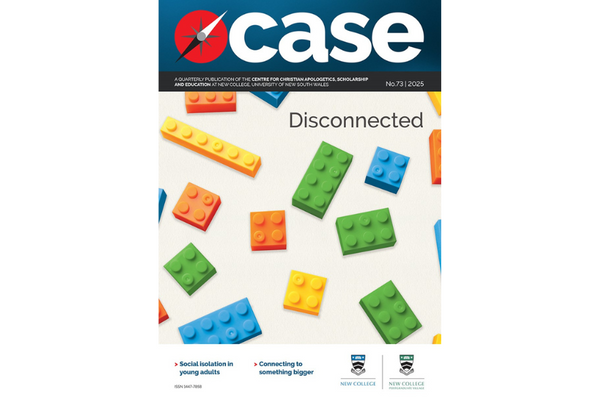I had a canine neighbour called Nigella

Hugh Mackay
If you’d like to do a little research on the subject of pet ownership, you might start by comparing two Australian population graphs. First, the falling birth rate—now down to 1.7 babies per woman, the lowest in our history, and still falling. Second, the rising rate of pet ownership—our 29 million pets now outnumber the human population. According to the RSPCA, Australia has one of the highest rates of pet ownership in the world, with about 60 percent of households owning a pet (40 percent have a dog, 27 percent a cat, plus assorted birds, fish, rabbits, guinea pigs and mice).
Now it’s time for some fieldwork. Take a walk to your local dog-walking park and observe the congregations of dog-owners socialising with each other while their pets do likewise (rather as parents used to do at local playgrounds in the era of higher birth rates).
As part of your research, you might try to meet some of those dogs. The most striking thing you’ll notice about them is their names. You’ll struggle to find a Spot, Fido, Smudge or Bozo. Instead, you’ll meet any number of Sophies, Millies, Bruces or Winstons. For most of last year, I had a canine neighbour called Nigella. (She had a human house-mate: a young woman who, unsurprisingly, was devoted to the TV chef, Nigella Lawson.)
By now, you might be forming the impression that pets—dogs in particular—are increasingly being used as child substitutes. That’s obviously true, but there’s more to it than that.
Back to the statistics.
Single-person households now account for more than 25 percent of all households, and that proportion is steadily rising (predicted to be one-third of households within the next decade or so). When that statistic is combined with other signs of increasing social fragmentation— such as our high dependency on IT, excessive busyness and high rate of relationship breakdown—it’s not surprising that we are also a society struggling with loneliness.
The Australian Psychological Society and Swinburne University recently published the results of a national survey showing that 25 percent of all Australians report feeling lonely for most of every week, with the highest levels of loneliness reported in the 18-25 years age-group. (‘Connected but lonely’ has become a popular label for heavy users of IT.)
Given the health problems associated with loneliness (heightened risk of anxiety, depression, hypertension, sleep disturbances, addictions, etc.), it’s fair to say we are experiencing an epidemic of loneliness that is closely related to our current epidemics of anxiety and depression.
Enter the companion pet!
In my career as a ‘hands-on’ social researcher, I was often struck by how animated, engaged and emotional people became when they were talking about their pets. Many said they preferred pets to people; many spoke of the joy of returning home to a pet that was always, reliably, pleased to see them; many spoke of a deep sense of connection with their pets, and of the feelings of comfort and security generated by the presence of pets—particularly dogs—in their home (and often on their bed).
What does this tell us about ourselves? First, that being herd animals, we crave close companionship. Second, that our personal relationships are often disappointing. Third, that patient listening and unconditional love are often easier to find in a pet than a partner, since pets are not distracted by ego-driven desires, busyness, or smartphones.
Surely there’s a salutary lesson there for us all, and I don’t mean ‘buy a dog’! The real lesson is that we ourselves need to become more attentive listeners, more loyal friends and more loving companions.
Hugh Mackay is a social researcher and bestselling author. His new book, The Inner Self, has just been published by Macmillan.
Leave a comment
Comments will be approved before showing up.



